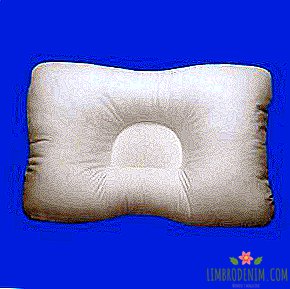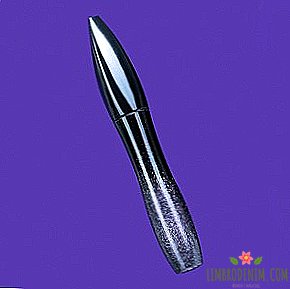How Oriental makeup breaks stereotypes about Muslim women
A typical European is full of stereotypes about Islam, which form including the image of a Muslim woman. Traditional hats, covering in the "best" case the hair, and in the "worst" - the whole face, often cause confusion. At the same time, the hijab, niqab, and burka are not at all obligatory attributes for girls professing Islam; in some countries with a significant percentage of the Muslim population (France, Germany, Switzerland and others) they are generally prohibited, as they contradict the authorities' notions about the "dignity of a woman" and prevent it from manifesting itself as a full-fledged person. By inertia, the frequent progressive European imagines other, even less meaningful, in his opinion, limitations, and a typical Muslim woman appears to be a downtrodden creature who cannot even choose her own makeup.

“Muslim countries” is a concept that secular Turkey and a conservative Iran gather under one wing, so before talking about the position of a woman in the East, you need to understand his political moods in general. The aforementioned Turkey can equally well be called Islamic as the United States - Christian, Jordan and Lebanon are also quite democratic. Saudi Arabia, Iraq, Iran, Pakistan are strictly Muslim states, where women’s rights are bad: girls can be married at any age, women’s inheritance is half the size of men’s, and rape victims can be punished for inappropriate behavior. "The course of most modern Muslim countries is aimed at suppressing Western tendencies and the role of women, but there are progressive examples. For example, everything is pretty good in Tunisia, as well as in Lebanon. True, in the latter case, the trend is due to a rather large percentage of Christians among the population than new ones ideas among Muslims, "- says Arabist Vladimir Koryagin.
Religious norms in an Islamic society encompass all aspects of life and therefore influence how a woman looks. In the Qur'an, of course, there is no exhaustive regulation of permissible and unacceptable make-up, and hats and body-covering women's clothing are also considered as a distinctive and therefore protective feature for Muslim women. “We need to understand that Muhammad did not invent new things at all - rather, he labeled quite familiar things to his contemporaries as“ right ”or“ wrong ”, just like the first Muslim theologians. The question of wearing headscarves was not particularly for them - this tradition is older than Islam, it is, among other things, just logical when living in the desert.When interpreting the Book, it is customary to use various texts and precedents that existed before, as well as consult with educated people, but think more correctly in talking about the Koran The categories are not "forbidden" or "allowed", but "accepted" or "not accepted." Nothing prevents the mullah from interpreting the ayahs progressively, but in Muslim countries there are institutions that can challenge his decision, such as the court, "explains religious scholar Leonid Moyzhes .
It turns out that women under Islamic law are not forbidden to be painted, and in most states the appearance of women is regulated only outside their apartment and the places where men are forbidden to be. Many people use it; even a quick analysis of social networks makes it clear that a large number of eastern girls are painted really bright. The beauty blogs are full of instructions on how to make sweeping arrows and properly smooth out the Smokey Eyes. As a rule, it doesn’t do without a mother-of-pearl (that is, the most noticeable) highlighter under the eyebrow, into the inner corner of the eye, on the top of the lip and cheekbones - along with always contoured eyebrows, carefully masked skin and frequent false eyelashes, make-up that the average European will seem excessive . He is encouraged not only by individual bloggers, but also by local media: luxurious Hia Magazine tells how to make khaki-aiz, and on Âlâ Dergi website, MAC makeup artist shows wedding make-up on the cover with arrows marked by the fold of the century and black kayal across the mucous membrane.
Most women around the world want makeup to make their face more beautiful, Muslim women do not stand apart. True, eastern women have dark skin, almost always brown eyes and dark hair, so their cosmetic palette looks monotonous and is presented with warm shades. If there is inadvertently a light pink eyeliner in it, the above described image (with highlighter, bronzer, ton of tonal and black kyle) will fall apart. Yes, blue shadows can look “in Arabic”, but for this they will need an environment of fat eyeliner, warm blush and tan. In other words, the external data of Eastern girls severely limit them, if they want to look like to be liked by others. In addition, the goal of being attractive to men is not alien to them at all - in a society where the majority of privileges and rights are concentrated specifically in men, it is only fueled.
Another interesting point in the relationship between Muslim women and makeup is halal. The compositions of most cosmetics are not halal, and in theory this is a serious obstacle to painting. In fact, many girls do not bother about the ingredients of their cosmetics, this is noticeable by the set that bloggers use and recommend the sites: the usual MAC, Urban Decay, Chanel, and not local Muslim producers. True, not all of our familiar cosmetics tramples halal, but many brands have some undesirable means for Muslims: Avon creams contain processed pork fat, banned carmine comes in MAC (it is obtained from insects, cochineal), and in an overwhelming amount of funds for fatty and problem skin contains alcohol. Accordingly, those who must strictly observe halal have two choices: either carefully study the composition of any lipstick and powder that you like, or pay attention to the permitted marks. The most famous among them is FX Cosmetics, it produces everything for makeup at all (if you wish, you could only get by with its means, without particularly limiting the palette and techniques). There are excellent multi-brand sites like halalcosmetics.eu, where the diversity is small, but basic pieces like mascara, tonal tools and rouge are sold. Well, do not forget the mineral makeup - powder, shadows and blush, which included only crushed crystals, perfectly fit into halal.

In general, makeup, which women like so much in the Middle East, is typical not only for Muslim countries. Eastern women have one pronounced type of appearance, and together with the closeness of national cultures, this forms similar ideas about beauty. The most noticeable part of their image is a fat eyeliner. The ancient Egyptians, Turks, and Arabs used the kayal to protect their eyes from the wind and sun. Pencil made the eyes visually bigger and brighter, which further increased their beauty in the eyes of the opposite sex. If you add to this traditional costumes, which opened up so little body that almost eyes became the most attractive in appearance, it becomes clear why the makeup of all Eastern women accentuated their eyes. Now cosmetics gives much more possibilities, that is why makeup has become less clumsy, but has retained its essence.
Now the East is also undergoing globalization, and this can not but affect its culture. Ideas about beauty in a previously homogeneous region are also diluted with Western ideas, which are brought not only by the Internet, but also by famous active women. The princess of Saudi Arabia and the founder of the D'NA concept store Dina Abdulaziz al-Saud obviously focuses on the West, which is clearly visible against the background of compatriots. She chooses concise images, and her makeup matches them: the princess prefers only to emphasize her facial features and rarely decides on bright lipstick or slightly more noticeable eye makeup. Another stylish influential woman is Sheikh Moza bint Nasser al-Misned, the second wife of the third emir of Qatar, noted in the Forbes list. Sheikh, obviously, does not bypass the active methods of preserving youth, but in her 55 she looks restrained and not vulgar, which is largely promoted by the well-established manner of painting. Like princess Abdulaziz, she prefers natural make-up, but she prefers bright black eyeliner much more often.


Western media oriented to the East also contribute to the enrichment of culture. Created a year and a half ago, Buro 24/7 Middle East writes about all understandable and interesting things like the new Givenchy lipstick, Dyptique candles or Dior patch arrows. More experienced Style.com Arabia adapts the materials of the leading publication, calls her heroine Rihanna and praises her for choosing bold lipsticks. About oriental ELLE, Harper's Bazaar and Vogue can, without much distorting the truth, be said that they are no different from their other world publications. On their covers there are edited images of beautiful women in glossy clothes: sometimes scarves appear, but more often - dresses and gold. By the way, the Arabian Harper's Bazaar is so progressive that he was not afraid to take pictures with Rihanna, who, as we all learned, loves transparent clothes. Before the dominance of androgyny and infantilism, which is now in the West, the East is still far away, but the beginnings are already visible: in 2011, the same Harper's Bazaar Arabia put a model with pink hair on the cover.
Summarizing, we can say that Islam regulates social relations in the Middle East, but not as severely as we used to think. In addition, it is worth remembering that the East consists of states with different political regimes. There are regions where women are limited in public actions, but they can be less strict and dress up if they are among the Mahram (family members). In other countries, women and in public are not very limited, so they choose lipstick to match the color of the scarf, paint arrows and Smokey at the same time and wear piercings and false nails. Surely, soon or not very much time and make-up will change, it will become less bright and appealing, but such changes will give rise not to bloggers and fashion sites, but only to change the model of public relations to a more democratic one.
Photo: cover photo via Shutterstock, 1 via Flickr





